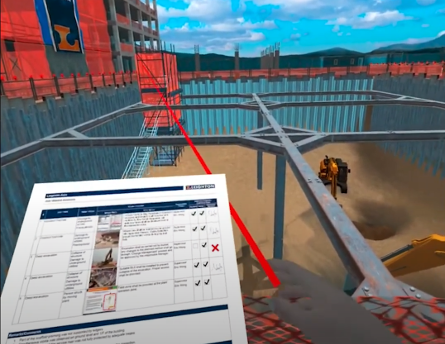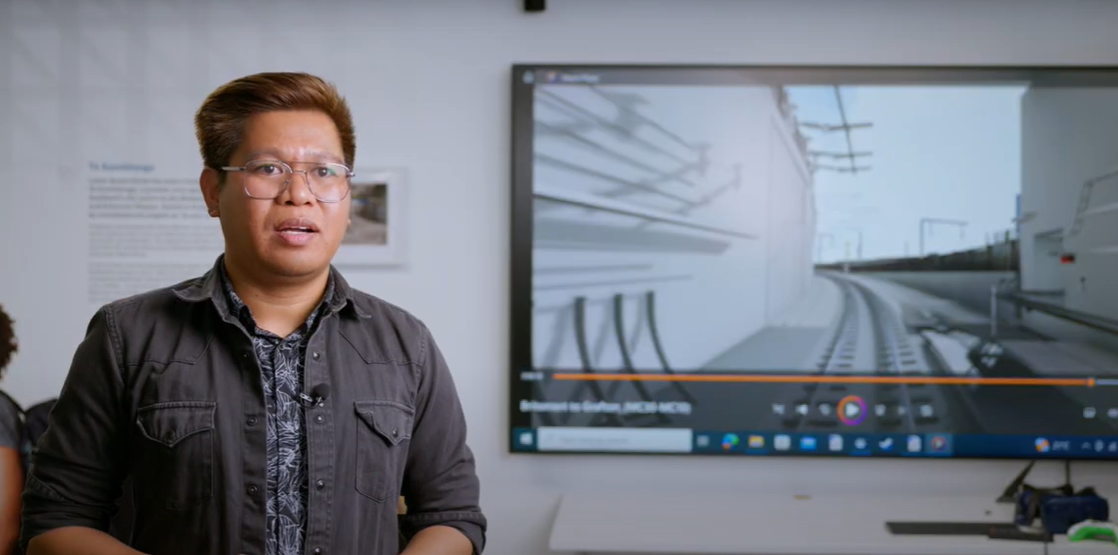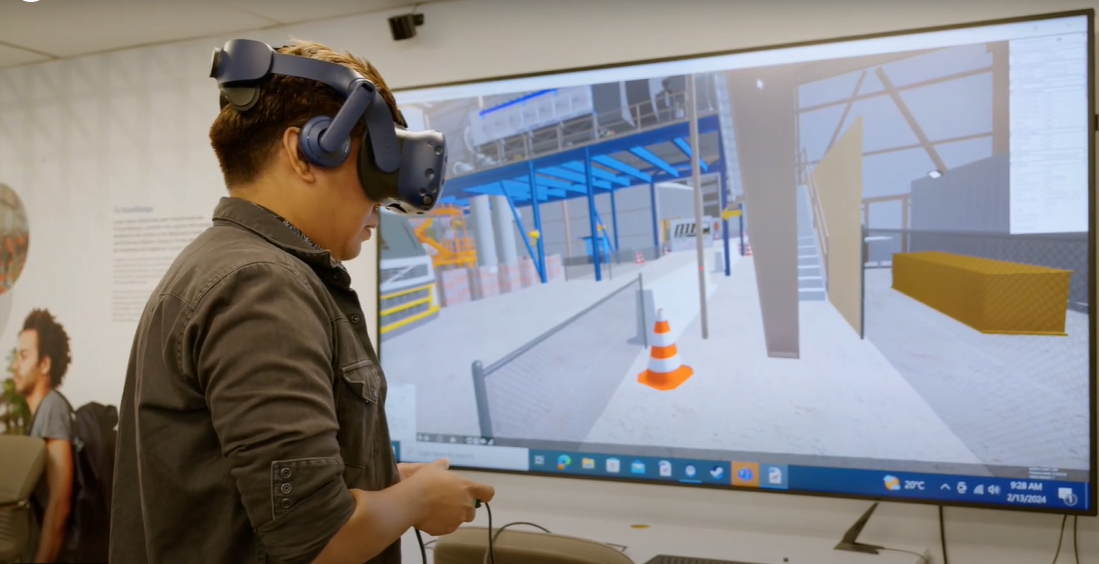Contractor / Subcontractor | Model interaction for training and education
Description
Model interaction using virtual and augmented reality (VR and AR) can be used to improve real-life situations on a construction site. Site workers can train in virtual scenarios to carry out activities such as risk identification, fire emergency drills and scenario planning.
Using AR and VR to advance learning is becoming a trend on construction sites. Engineers and supervisors can set up a VR environment in a container and use it to investigate and assess the actual site.

Case studies
Uses and benefits for health and safety
Improve health and safety training by enabling learners to visualise real-world situations in a virtual environment. This provides nearly a hands-on experience of construction activities and scenarios in complete safety.
Improve site safety by testing safety protocols in virtual environment before using them in the real world.
Better identify and increase awareness of hazards by providing staff with a virtual walk through of the site. Users experience potential hazards, share knowledge and assess potential mitigations in the virtual space.
Improve access to specialist health and safety personnel by collaborating in the virtual environment, without requiring them to be present in-person.
Technology/techniques
BIM tools that can use a virtual and augmented reality environment to represent site conditions are widely available in the architecture, engineering and construction industry. Setting up one of these tools usually requires a complete construction model that includes all temporary works, such as hoardings and equipment.
Setting up a BIM model for training and development requires a lighter model, which only needs to include the elements necessary to present a specific topic. If too much information is added, it can become confusing to the users.
Model/data requirements
For most training uses, it is important to include temporary works in the construction model, particularly those associated with high-risk activities such as scaffolds and shore loading. Cranes and other machinery in the model should reflect the actual equipment used on-site, and earthworks should be included if excavations are involved. It’s also important to integrate ground contours into the model, especially for infrastructure projects.
Representing hidden elements such as underground or above ceiling services may be valuable to provide context for instructions and decisions made in the training scenario. Spaces allocated to pedestrian and vehicle traffic can be represented by creating void spaces in the model.
Hardware and software requirements
A workstation capable of running CAD software is recommended for working with AR and VR environments. A high-end graphics card is also recommended, especially when dealing with larger or more complex spaces. A VR headset and associated controller are necessary for VR, while AR training may be carrier out using a headset or with a tablet or other interactive display.
Unfortunately, few of the VR and AR software tools on the market are specifically designed for training and education purposes. However, it’s possible to customise these tools for learning:
- space
- Enscape (plugin for AutoDesk Revit)
- space
- IrisVR
- space
- VR Viewer (integrated into Revizto)
- space
- vGIS
- space
- AR Viewer (extension for Trimble Connect).
Contract/procurement implications
The client’s BIM project brief should clearly describe the training and education expectations. It should require the main contractor to price resources and materials for BIM-based learning based on VR and AR.
It is imperative to specify this as one of the project’s uses for BIM and price it accordingly. This includes having a dedicated workstation and a training room for these activities.
Roles and responsibilities
| Discipline BIM modellers | Represent real-life object elements. Each discipline should be present in the scenario model. ㅤ |
| BIM manager | Combines the models from each discipline and adds equipment and temporary elements in the scenario model. Ensures each model contains the elements and context it needs. ㅤ |
| Health and safety resource | Identifies scenarios that training should be based on and ensures all relevant hazards are integrated in the scenario model. ㅤ |
Training requirements
It should be relatively straightforward to interact with a model using navigation tools in any software package. Most software vendors provide a video demonstrating how to use their tools.
Be aware that people react differently to VR. Wearing a headset and being immersed in a virtual world can cause some people to feel dizzy or disorientated.
Similarly, it can take time for users to become familiar with AR, especially advanced features, such as using hand gestures to send commands on Microsoft’s HoloLens headsets.
Future directions
Across all industries, model-based training is likely to become the norm in the next 5–10 years.
In construction, VR and AR is likely to increasingly become part of site processes, including induction, risk identification and mitigation, and space and high-risk activity planning.
As more capable and cost-effective hardware emerges, the rate of uptake will continue to increase.


